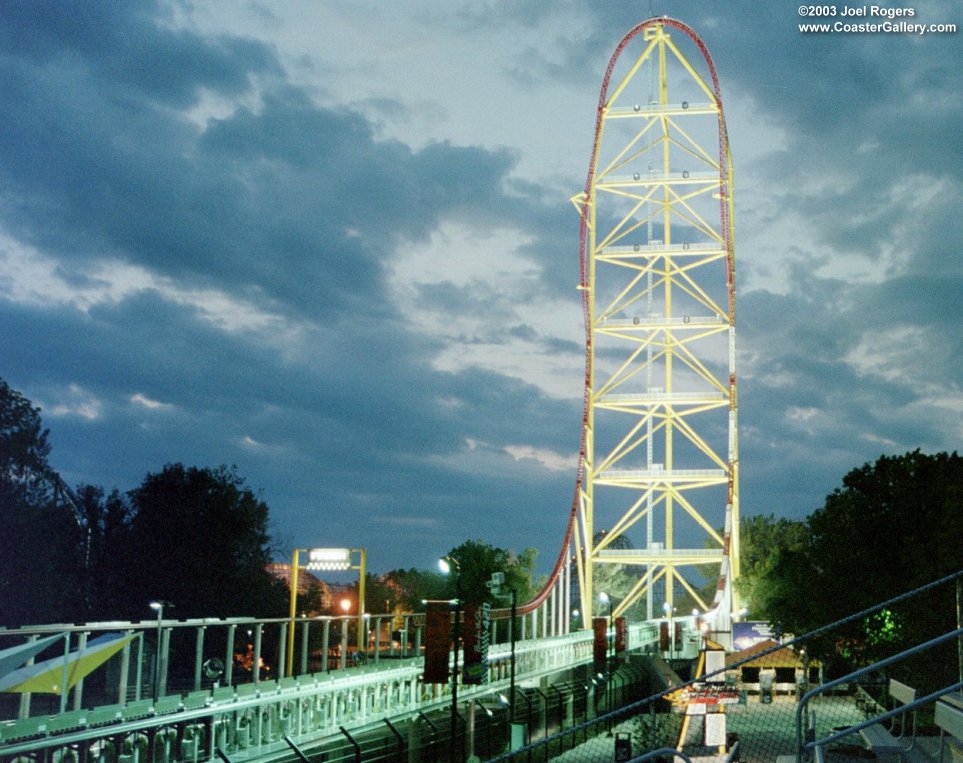
Top Thrill Dragster
The hydraulic-launch mechanism is designed to impart each train with enough speed to climb up and over this massive hill, but the train occasionally lacks sufficient speed to crest the summit. These under-speed launches are most often caused by cold weather (wheel lubricants become more viscous), high winds (the train's 120 mile-per-hour speed plus a headwind creates tremendous aerodynamic drag), or a heavily loaded train (not every passenger weighs the average 170 pounds). When this happens, gravity takes over and the train falls backward down the tower and heads back toward the loading platform. It may look dramatic, but this "rollback" is not a problem. In fact, lucky riders who have been through a "rollback" often state that the freefall backward is more exciting than a normal ride cycle!
This image shows some of the several hundred copper-alloy fins on the launch track. Normally extended, these fins are pneumatically pulled down right before a launch. The train can be shot out of the station only after all of the fins are lowered out of the way. As soon as the train passes, air pressure is released and the fins return to the raised position just in case they are needed to stop a "rollback." This system has over 800 sensors with two proximity sensors on each brake fin and other sensors on the pneumatic lines. Nearly every sensor is paired with another sensor to provide redundancy to ensure a single sensor failure does not cause the computer system to lose data for a part of the ride.
These fins are spring-loaded to the up position. They react with permanent magnets installed on the trains. This fail-safe braking system will work even after a power failure.

©2021 by Joel A. Rogers.